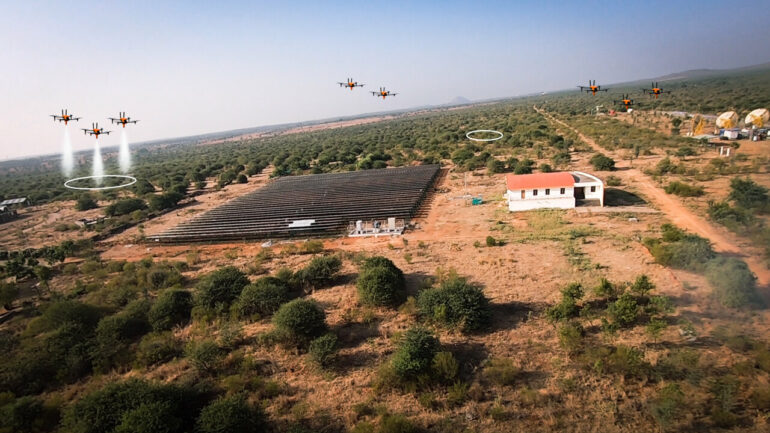Researchers at the Indian Institute of Science (IISc) are using multiple swarms of drones to tackle natural disasters like forest fires. Forest fires are becoming increasingly catastrophic across the world, accelerated by climate change.
“A swarm of drones could be the solution,” says Suresh Sundaram, Professor in the Department of Aerospace Engineering, IISc. Although they have not yet been used in India, the use of drones is not entirely new. But in a new study published in IEEE Transactions on Systems, Man, and Cybernetics: Systems, Sundaram’s team proposes taking the technology a step further: Coordinated multi-swarm drones swooping in to quell forest fires.
“By the time somebody identifies and reports a fire, it has already started spreading and cannot be put out with one drone,” says Sundaram. “You need to have a swarm of drones. A swarm that can communicate with each other.”
The solution was to design a special kind of algorithm that would allow the swarm to communicate with each other as well as make independent decisions. In a hypothetical scenario, when an alarm is raised about a potential fire, the swarms can be sent in, each drone armed with cameras, thermal and infrared sensors, and temperature detectors, to spot the fires.
Once the fire is discovered, the drone closest to it becomes the center of the swarm and attracts others towards it. Interestingly, each drone will also have autonomy to calculate the fire’s size and potential spread, and decide how many drones are needed to quench the fire.
“These decisions are made by the drones,” says Sundaram. “They figure out which cluster of fire is going to spread faster, and allocate the required number of drones to put out that fire while the others look for other fire clusters.”
The swarm-based search algorithm developed by the team is key to controlling the drones’ behavior. Searching for fire cannot be random as the area to explore would be too large. To address this, the researchers took inspiration from the foraging behavior of a marine predator, a flagellum called Oxyrrhis marina.
“When foraging, it firsts take longer steps to explore the area. Once it feels like it is closer to the food source, it will reduce the step length and then start exploring the area in more detail,” explains Josy John, Ph.D. student at the Department of Aerospace Engineering, and lead author of the study.
The team decided to incorporate this behavior into their algorithm. “The temperature sensors in the drones look for a minimum [threshold] value. When that is reached, the drones reduce their search step, because the fire is near,” John adds.
The advantage of using drones, Sundaram points out, is that the decision-making is decentralized, based on data, and aimed at maximum efficiency. No more than the required number of drones will be assigned to a fire cluster, allowing others to fan out in search of other clusters.
The researchers have tested specific components of the approach, such as the AI-enabled fire detection using thermal cameras, and accurate payload drop mechanism for fire extinguisher deployment. Full-scale search and mitigation by the swarm is yet to undergo field-testing. Going forward, they plan to combine such drone swarms with unmanned ground vehicles that can carry resources and serve as refueling stations.
Such drone swarms can also be helpful during other natural disasters like floods and earthquakes, to locate survivors, deliver water, food and medicines; and boost communication.
More information:
Josy John et al, An Efficient Approach With Dynamic Multiswarm of UAVs for Forest Firefighting, IEEE Transactions on Systems, Man, and Cybernetics: Systems (2024). DOI: 10.1109/TSMC.2024.3352660
Provided by
Indian Institute of Science
Citation:
Using drone swarms to fight forest fires (2024, March 21)



